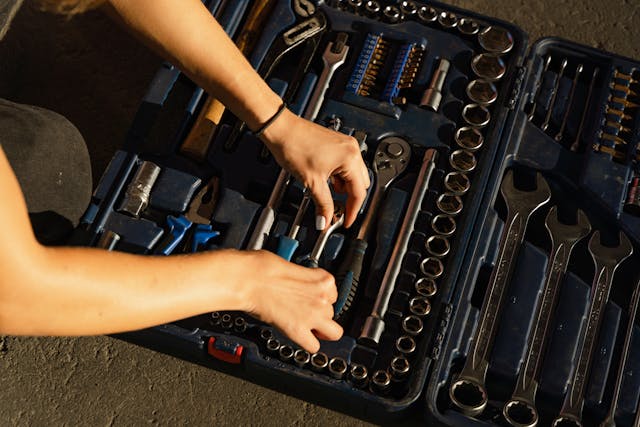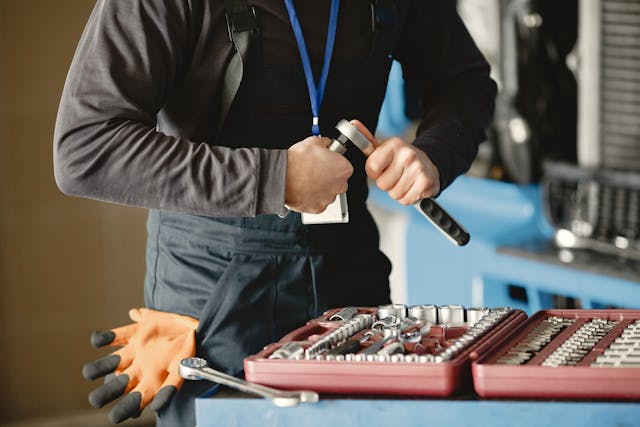Torque wrenches are indispensable tools in automotive, construction, and engineering industries, ensuring the correct application of force to fasteners. However, like any precision tool, torque wrenches require periodic recalibration to maintain their accuracy. Whether you’re a professional mechanic, a DIY enthusiast, or someone working on heavy machinery, knowing how to recalibrate torque wrenches is crucial for both safety and performance.
Failure to recalibrate torque wrenches can lead to inaccurate readings, resulting in over-tightened or under-tightened bolts. This can compromise the structural integrity of assemblies, potentially leading to costly damages or safety hazards. Regular recalibration ensures your tools function as intended, extending their lifespan and improving the quality of your work.
This comprehensive guide will walk you through everything you need to know about recalibrating torque wrenches. From understanding why calibration matters to step-by-step instructions and expert tips, you’ll gain all the knowledge needed to keep your tools in top shape.
Why Recalibration Is Essential for Torque Wrenches
Torque wrenches are precision instruments, and their accuracy can degrade over time due to regular use, mechanical wear, or improper handling.
Key Reasons to Recalibrate Torque Wrenches:
- Maintain Accuracy: Ensure correct force application to prevent damage.
- Extend Tool Lifespan: Protect the internal mechanisms from wear.
- Comply with Industry Standards: Meet safety and quality requirements.
- Prevent Equipment Failures: Avoid costly repairs due to improperly secured fasteners.
Recalibrating torque wrenches is not just a best practice; it’s a necessity for maintaining professional standards.
Signs That It’s Time to Recalibrate
Recognizing when to recalibrate torque wrenches is the first step in ensuring consistent performance.
- Inconsistent Readings: Variations in torque values despite using the same settings.
- Frequent Use: Tools used daily or in high-pressure applications require more frequent recalibration.
- Dropped or Mishandled: Physical impacts can disrupt internal mechanisms.
- Manufacturer’s Recommendation: Follow the recalibration interval specified in the manual.
Early detection of issues can save you from costly mistakes later.
How Often Should You Recalibrate Torque Wrenches?
The frequency of recalibration depends on the tool’s usage, application, and storage conditions.
- Heavy Usage: Every 3–6 months.
- Moderate Usage: Every 6–12 months.
- Light Usage: Annually or as recommended by the manufacturer.
- Critical Applications: After every 5,000 uses or as required by industry standards.
Consistency in recalibration ensures your torque wrenches remain reliable over time.
Tools and Equipment Needed for Recalibration
Before recalibrating torque wrenches, gather the necessary tools and equipment for the task.
- Calibration Device: Such as a torque tester or calibration bench.
- Adjustable Wrenches: For disassembling and reassembling parts.
- User Manual: Specific instructions for your torque wrench model.
- Safety Gear: Gloves and protective eyewear.
Having the right tools simplifies the recalibration process, ensuring accuracy and efficiency.
Step-by-Step Guide to Recalibrate Torque Wrenches
Recalibrating torque wrenches involves precise adjustments to restore their accuracy.
- Set Up the Calibration Device: Secure it on a flat, stable surface.
- Attach the Torque Wrench: Connect it to the device according to the manual.
- Apply Torque: Gradually increase torque while monitoring readings.
- Adjust Calibration: Use the tool’s adjustment mechanism to correct deviations.
- Re-Test for Accuracy: Repeat the process to confirm proper recalibration.
Follow these steps carefully to restore your torque wrench’s accuracy.
Common Mistakes to Avoid During Recalibration
Mistakes during recalibration can lead to inaccurate results or damage to the tool.
- Ignoring Manufacturer Guidelines: Always refer to the manual for specific instructions.
- Skipping Safety Precautions: Wear protective gear and ensure a stable workspace.
- Overtightening Adjustments: Excess force can damage internal components.
- Neglecting Environmental Factors: Perform recalibration in a controlled environment.
Avoiding these errors ensures a smooth and effective recalibration process.
Maintaining Torque Wrenches After Recalibration
Recalibration is just one part of maintaining torque wrenches. Proper care ensures long-term reliability.
- Store Properly: Keep wrenches in a clean, dry location to prevent corrosion.
- Avoid Overuse: Use the tool within its specified range to minimize wear.
- Inspect Regularly: Check for signs of damage or wear before each use.
- Lubricate Moving Parts: Apply appropriate lubricants to reduce friction.
These practices complement recalibration, keeping your torque wrenches in optimal condition.
Choosing the Right Calibration Service
For complex recalibration tasks, consider professional calibration services.
- Accreditation: Choose services certified by recognized bodies.
- Turnaround Time: Ensure timely calibration to avoid work delays.
- Cost-Effectiveness: Compare prices to find the best value.
- Comprehensive Reports: Look for services that provide detailed calibration reports.
Professional services offer precision and peace of mind for critical applications.
Benefits of Regular Recalibration
Recalibrating torque wrenches offers several advantages that enhance performance and safety.
- Improved Accuracy: Consistent torque application reduces errors.
- Enhanced Durability: Protects internal mechanisms from wear.
- Cost Savings: Prevents damage to tools and equipment.
- Compliance Assurance: Meets industry standards and regulations.
Investing in recalibration is a smart decision for anyone relying on torque wrenches.
Conclusion: Mastering the Art of Recalibrating Torque Wrenches
Recalibrating torque wrenches is an essential maintenance task that ensures accuracy, safety, and longevity. Whether you’re performing DIY repairs or managing industrial equipment, understanding and implementing proper recalibration techniques is invaluable.
From identifying when recalibration is needed to following step-by-step procedures and avoiding common mistakes, this guide equips you with the knowledge to maintain your tools effectively. Regular recalibration not only enhances the performance of your torque wrenches but also protects your investments and ensures compliance with industry standards.
Keep your torque wrenches in peak condition, and they’ll reward you with years o





